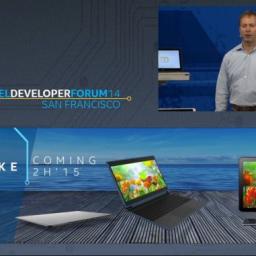Skylake graphics do not have VGA connector support
 Intel has released more information regarding the availability of Skylake, their successor to Broadwell. The first surprise is that Skylake is still on track for an end of year release in 2015. After the delays with Broadwell, many thought that the Skylake roll-out would be similarly pushed back. Because of the lack of delay, the first Skylake chips will ship to manufacturers only a few months after the general availability of desktop Broadwell models.
Intel has released more information regarding the availability of Skylake, their successor to Broadwell. The first surprise is that Skylake is still on track for an end of year release in 2015. After the delays with Broadwell, many thought that the Skylake roll-out would be similarly pushed back. Because of the lack of delay, the first Skylake chips will ship to manufacturers only a few months after the general availability of desktop Broadwell models.Another surprise is that the Intel Gen 9 graphics completely do away with VGA connector support. That's right, the 15 pin analog "D" shaped connector is finally getting nixed - at least from the built-in Intel graphics.
Unlike Broadwell, which only supports DDR4 memory on the server and the extreme versions, Skylake will finally support DDR4 on consumer rated models.
The one thing you would want to wait on Skylake for is HDMI 2.0. If you plan on connecting a 4K HDMI external monitor to your laptop, Broadwell will not be able to run it at 60Hz. Broadwell can push 4K at 30Hz over HDMI (the older version), which is fine for movies but will feel sub-optimal for general desktop use. Or you could use Display Port to get 4K@60Hz by using the fancy chaining feature of Display Port (your screen is actually split into 2 lower resolution virtual panels, but the signal is still routed through the same cable.) Also note that Apple screens use a Thunderbolt cable, which means Display Port will be used. HDMI is far more common in the non-apple world.
Here is an example of a new native HDMI 2.0 4K screen.